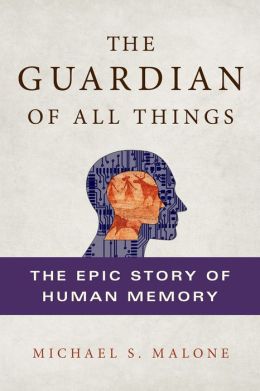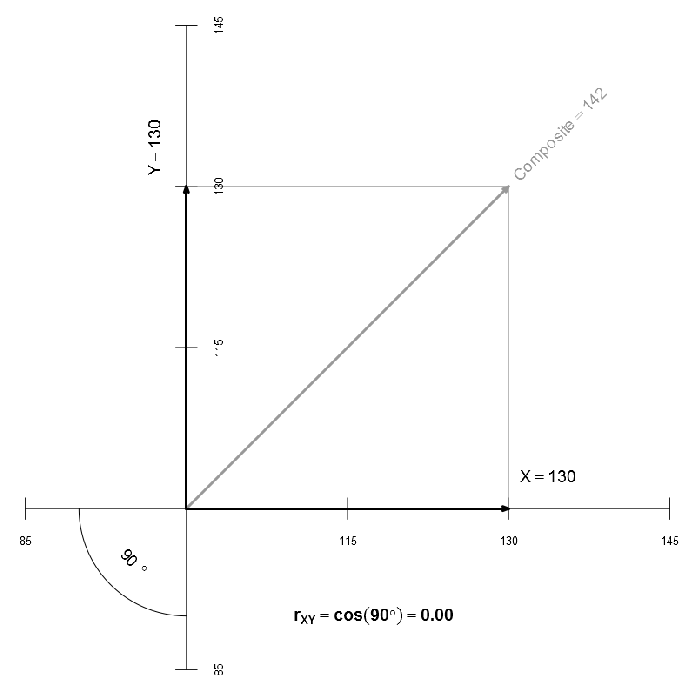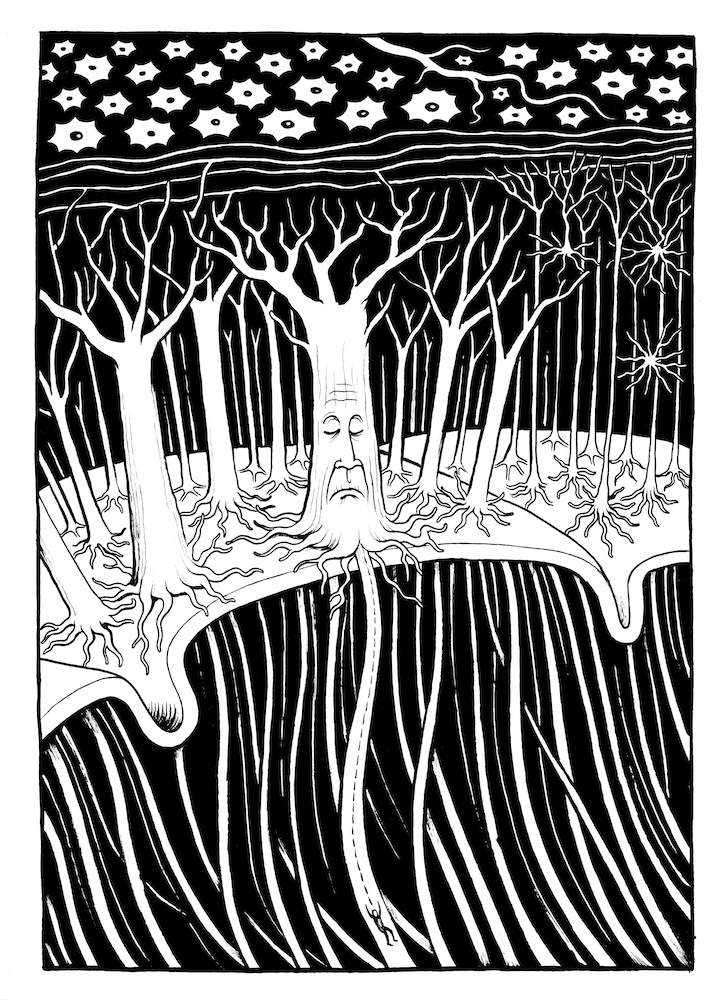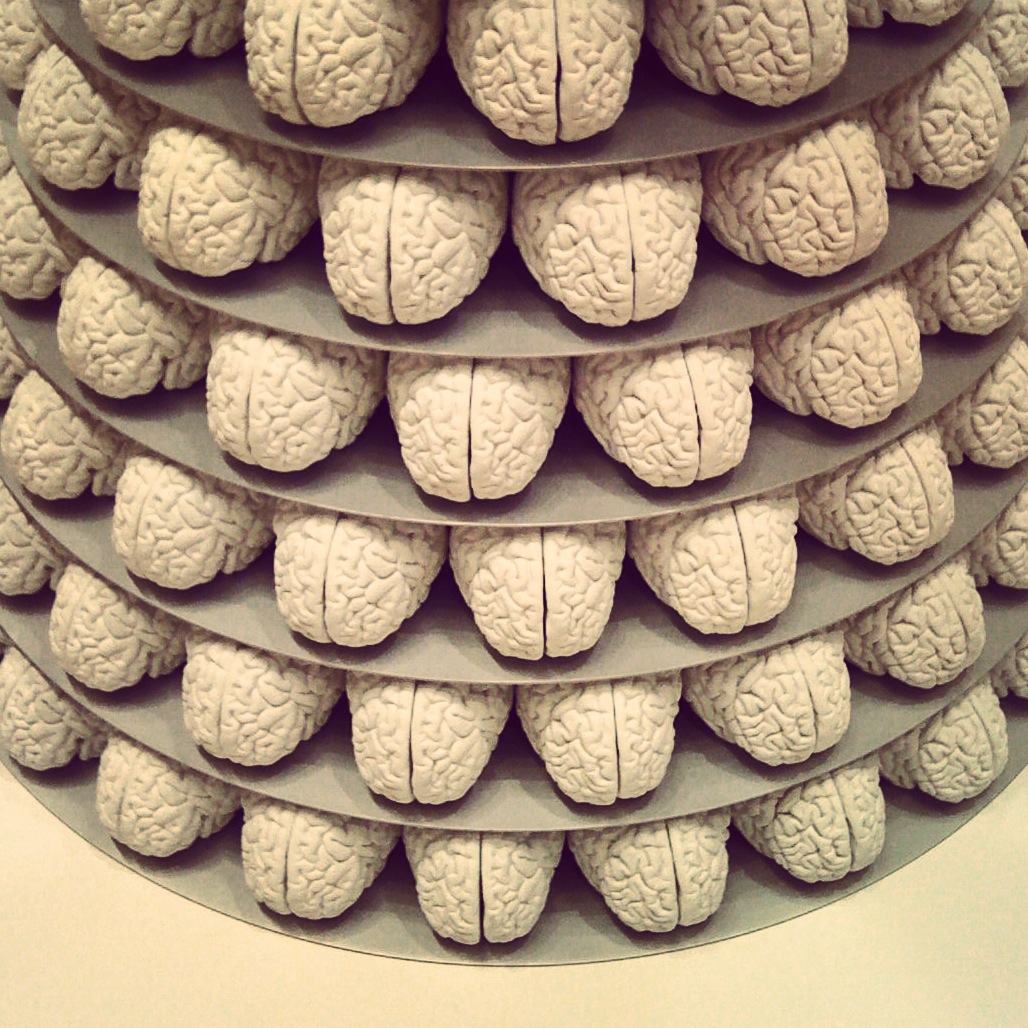Wednesday, April 30, 2014
Sharing Does working memory moderate the effects of fraction intervention? An aptitude–treatment interaction. via BrowZine
Fuchs, Lynn S.; Schumacher, Robin F.; Sterba, Sonya K.; Long, Jessica; Namkung, Jessica; Malone, Amelia; Hamlett, Carol L.; Jordan, Nancy C.; Gersten, Russell; Siegler, Robert S.; Changas, Paul
Journal of Educational Psychology, Vol. 106 Issue 2 – 2014: 499 - 514
10.1037/a0034341
Sharing Strategy training eliminates sex differences in spatial problem solving in a stem domain. via BrowZine
Stieff, Mike; Dixon, Bonnie L.; Ryu, Minjung; Kumi, Bryna C.; Hegarty, Mary
Journal of Educational Psychology, Vol. 106 Issue 2 – 2014: 390 - 402
10.1037/a0034823
Sharing A meta-analysis of the effectiveness of intelligent tutoring systems on college students’ academic learning. via BrowZine
Steenbergen-Hu, Saiying; Cooper, Harris
Journal of Educational Psychology, Vol. 106 Issue 2 – 2014: 331 - 347
10.1037/a0034752
Sunday, April 27, 2014
Article: mocost: Beautiful 3D-printed brain ...
mocost: Beautiful 3D-printed brain ...
https://twitter.com/mocost/status/449483809168171008/photo/1
Sent via Flipboard
Friday, April 25, 2014
Sharing Introduction to the special issue on emotional intelligence via BrowZine
Austin, Elizabeth J.; Saklofske, Donald H.
Personality and Individual Differences, Vol. 65 – 2014: 1 - 2
10.1016/j.paid.2014.02.006
Sharing Attention in the real world: toward understanding its neural basis via BrowZine
Peelen, Marius V.; Kastner, Sabine
Trends in Cognitive Sciences, Vol. 18 Issue 5 – 2014: 242 - 250
10.1016/j.tics.2014.02.004
Sharing Publication and other reporting biases in cognitive sciences: detection, prevalence, and prevention via BrowZine
Ioannidis, John P.A.; Munafò, Marcus R.; Fusar-Poli, Paolo; Nosek, Brian A.; David, Sean P.
Trends in Cognitive Sciences, Vol. 18 Issue 5 – 2014: 235 - 241
10.1016/j.tics.2014.02.010
Wednesday, April 23, 2014
Sharing White matter microstructure correlates of mathematical giftedness and intelligence quotient via BrowZine
Navas-Sánchez, Francisco J.; Alemán-Gómez, Yasser; Sánchez-Gonzalez, Javier; Guzmán-De-Villoria, Juan A.; Franco, Carolina; Robles, Olalla; Arango, Celso; Desco, Manuel
Human Brain Mapping, Vol. 35 Issue 6 – 2014: 2619 - 2631
10.1002/hbm.22355
Sharing Gray and white matter correlates of navigational ability in humans via BrowZine
Wegman, Joost; Fonteijn, Hubert M.; van Ekert, Janneke; Tyborowska, Anna; Jansen, Clemens; Janzen, Gabriele
Human Brain Mapping, Vol. 35 Issue 6 – 2014: 2561 - 2572
10.1002/hbm.22349
Tuesday, April 22, 2014
Article: Search of: autism spectrum disorders OR autism OR pervasive developmental disorders OR PDD OR Kanner's syndrome OR child mental disorders OR asperger syndrome OR autistic OR developmental disabilities | Open Studies | Exclude Unknown | NIH - List Results
Search of: autism spectrum disorders OR autism OR pervasive developmental disorders OR PDD OR Kanner's syndrome OR child mental disorders OR asperger syndrome OR autistic OR developmental disabilities | Open Studies | Exclude Unknown | NIH - List Results
http://www.clinicaltrials.gov/ct2/results?fund=0&no_unk=Y&recr=Open&term=autism+spectrum+disorders+OR+autism+OR+pervasive+developmental+disorders+OR+PDD+OR+Kanner%27s+syndrome+OR+child+mental+disorders+OR+asperger+syndrome+OR+autistic+OR+developmental+disabilities
Sent via Flipboard
Sharing Self-handicapping, perfectionism, locus of control and self-efficacy: A path model via BrowZine
Self-handicapping, perfectionism, locus of control and self-efficacy: A path model
Arazzini Stewart, Martina; De George-Walker, Linda
Personality and Individual Differences, Vol. 66 – 2014: 160 - 164
10.1016/j.paid.2014.03.038
******************************************************
Saturday, April 19, 2014
Why composite scores are more extreme than the average of their parts [feedly]
----
Why composite scores are more extreme than the average of their parts
// Assessing Psyche, Engaging Gauss, Seeking Sophia
Suppose that two tests have a correlation of 0.6. On both tests an individual obtained an index score of 130, which is 2 standard deviations above the mean. If both tests are combined, what is the composite score?
Our intuition is that if both tests are 130, the composite score is also 130. Unfortunately, taking the average is incorrect. In this example, the composite score is actually 134. How is it possible that the composite is higher than both of the scores?
If I measure the length of a board twice or if I take the temperature of a sick child twice, the average of the results is probably the best estimate of the quantity I am measuring. Why can't I do this with standard scores?
Standard scores do not behave like many of our most familiar units of measurement. Degrees Celsius have meaning in reference to a standard, the temperature at which water freezes at sea level. In contrast, standard scores do not have meaning compared to some absolute standard. Instead, the meaning of a standard score derives from its position in the population distribution. One way to describe the position of a score is its distance from the population mean. The size of this distance is then compared to the standard deviation, which is how far scores typically are from the population mean (more precisely, the standard deviation is the square root of the average squared distance from the mean). Thus, the "standard" to which standard scores are compared are the mean and standard deviation.
The average of two imperfectly correlated index scores is not an index score. Its standard deviation is smaller than 15 and thus our sense of what index scores mean does not apply to the average to two index scores. To make sense of the composite score, we must convert it into an index score that has a standard deviation of 15.
How is this possible. It is unusual for someone to score 130. It is even more unusual for someone to score 130 on two tests that are imperfectly correlated. The less correlated the tests, the more unusual it is to score high on both tests.
Below is a geometric representation of this phenomenon. Correlated tests can be graphed with oblique axes (as is done in factor analyses with oblique rotations). The cosine of the correlation is the angle between the axes. As seen below, the lower the correlation, the more extreme the composite. As the correlation approaches 1, the composite approaches the average of the scores.
In a previous post, I presented this material in greater detail.
----
Shared via my feedly reader
Friday, April 18, 2014
Article: Scientists discover brain’s anti-distraction system
Scientists discover brain's anti-distraction system
http://www.psypost.org/2014/04/scientists-discover-brains-anti-distraction-system-24527
Sent via Flipboard
Sharing Psychology of knowledge representation via BrowZine
Grimm, Lisa R.
Wiley Interdisciplinary Reviews: Cognitive Science, Vol. 5 Issue 3 – 2014: 261 - 270
10.1002/wcs.1284
Sharing Meta-analysis of functional neuroimaging studies indicates that an increase of cognitive difficulty during executive tasks engages brain regions associated with time perception via BrowZine
Radua, Joaquim; Pozo, Natalia Ojeda del; Gómez, José; Guillen-Grima, Francisco; Ortuño, Felipe
Neuropsychologia, Vol. 58 – 2014: 14 - 22
10.1016/j.neuropsychologia.2014.03.016
Sharing Is health literacy an example of construct proliferation? A conceptual and empirical evaluation of its redundancy with general cognitive ability via BrowZine
Reeve, Charlie L.; Basalik, Debra
Intelligence, Vol. 44 – 2014: 93 - 102
10.1016/j.intell.2014.03.004
Article: Videos: Rhythmic Dynamics and Cognition conference 6-4-13 | Miller Laboratory
Videos: Rhythmic Dynamics and Cognition conference 6-4-13 | Miller Laboratory
https://www.earlkmiller.org/2014/04/18/videos-rhythmic-dynamics-and-cognition-6-4-13/
Sent via Flipboard
Thursday, April 17, 2014
Article: Artists 'have structurally different brains'
Artists 'have structurally different brains'
http://www.bbc.co.uk/news/science-environment-26925271
Sent via Flipboard
Sunday, April 13, 2014
Sharing Networks involved in olfaction and their dynamics using independent component analysis and unified structural equation modeling via BrowZine
Networks involved in olfaction and their dynamics using independent component analysis and unified structural equation modeling
Karunanayaka, Prasanna; Eslinger, Paul J.; Wang, Jian-Li; Weitekamp, Christopher W.; Molitoris, Sarah; Gates, Kathleen M.; Molenaar, Peter C.M.; Yang, Qing X.
Human Brain Mapping, Vol. 35 Issue 5 – 2014: 2055 - 2072
10.1002/hbm.22312
University of Minnesota Users:
https://www.lib.umn.edu/log.phtml?url=http://doi.wiley.com/10.1002/hbm.22312
Non-University of Minnesota Users: (Full text may not be available)
http://doi.wiley.com/10.1002/hbm.22312
Accessed with BrowZine, supported by University of Minnesota.
******************************************************
Kevin McGrew, PhD
Sharing Subcortical regional morphology correlates with fluid and spatial intelligence via BrowZine
Burgaleta, Miguel; MacDonald, Penny A.; Martínez, Kenia; Román, Francisco J.; Álvarez-Linera, Juan; González, Ana Ramos; Karama, Sherif; Colom, Roberto
Human Brain Mapping, Vol. 35 Issue 5 – 2014: 1957 - 1968
10.1002/hbm.22305
Sluggish Cognitive Tempo in Abnormal Child Psychology: An Historical Overview and Introduction to the Special Section via BrowZine
http://www.nytimes.com/2014/04/12/health/idea-of-new-attention-disorder-spurs-research-and-debate.html
Below is introductory article to special issue of Journal of Abnormal Child Psych that focused on SCT
Sluggish Cognitive Tempo in Abnormal Child Psychology: An Historical Overview and Introduction to the Special Section
Becker, Stephen P.; Marshall, Stephen A.; McBurnett, Keith
Journal of Abnormal Child Psychology, Vol. 42 Issue 1 – 2014: 1 - 6
10.1007/s10802-013-9825-x
Thursday, April 10, 2014
Article: Brain Changes Suggest Autism Starts In The Womb
Brain Changes Suggest Autism Starts In The Womb
http://www.npr.org/blogs/health/2014/03/26/294446735/brain-changes-suggest-autism-starts-in-the-womb
Sent via Flipboard
Sharing The relationship among geometry, working memory, and intelligence in children via BrowZine
Giofrè, David; Mammarella, Irene Cristina; Cornoldi, Cesare
Journal of Experimental Child Psychology, Vol. 123 – 2014: 112 - 128
10.1016/j.jecp.2014.01.002
Tuesday, April 08, 2014
Why is working memory related to intelligence? Different contributions from storage and processing [feedly]
Why is working memory related to intelligence? Different contributions from storage and processing
// MEMORY - Web of Knowledge
Title: Why is working memory related to intelligence? Different contributions from storage and processing
Author(s): Dang, Cai-Ping; Braeken, Johan; Colom, Roberto; et al.
Source: MEMORY, 22 (4): 426-441 MAY 2014
IDS#: AB2CR. ISSN: 0965-8211
----
Shared via my feedly reader
The Science of How Memory Works
----
The Science of How Memory Works
// Brain Pickings
What the four "slave" systems of the mind have to do with riding a bicycle.
 "Whatever becomes of [old memories], in the long intervals of consciousness?" Henry James wistfully pondered upon turning fifty. "They are like the lines of a letter written in sympathetic ink; hold the letter to the fire for a while and the grateful warmth brings out the invisible words." James was not alone in seeking to understand the seemingly mysterious workings of human memory — something all the more urgently fascinating in our age of information overload, where we're evolving a new kind of "transactive memory." But like other scientific mysteries of how the brain works — including what actually happens while we sleep and why some people are left-handed — memory continues to give scientists more questions than answers.
"Whatever becomes of [old memories], in the long intervals of consciousness?" Henry James wistfully pondered upon turning fifty. "They are like the lines of a letter written in sympathetic ink; hold the letter to the fire for a while and the grateful warmth brings out the invisible words." James was not alone in seeking to understand the seemingly mysterious workings of human memory — something all the more urgently fascinating in our age of information overload, where we're evolving a new kind of "transactive memory." But like other scientific mysteries of how the brain works — including what actually happens while we sleep and why some people are left-handed — memory continues to give scientists more questions than answers.
In The Guardian of All Things: The Epic Story of Human Memory (public library) technology writer Michael S. Malone takes a 10,000-year journey into humanity's understanding of our great cognitive record-keeper, exploring both its power and its ongoing perplexity.
One of the most astounding facts Malone points out is that memory — that is, the creation of memories — is the result of a biochemical reaction that takes place inside neurons, one particularly common among neurons responsible for our senses. Scientists have recently discovered that our short-term memory — also known as "working memory," the kind responsible for the "chunking" mechanism that powers our pattern-recognition and creativity — is localized to a few specific areas of the brain. The left hemisphere, for instance, is mostly in charge of verbal and object-oriented tasks. Even so, however, scientists remain mystified by the specific distribution, retrieval, and management of memory. Malone writes:
One popular theory holds that short-term memory consists of four "slave" systems. The first is phonological, for sound and language that (when its contents begin to fade) buys extra time through a second slave system. This second operation is a continuous rehearsal system — as you repeat a phone number you've just heard as you run to the other room for your phone. The third system is a visuo-spatial sketch pad that, as the name suggests, stores visual information and mental maps. Finally, the fourth (and most recently discovered) slave is an episodic buffer that gathers all of the diverse information in from the other slaves, and maybe other information from elsewhere, and integrates them together into what might be described as a multimedia memory.
It's worth noting that memory and creativity have a great deal in common — the combinatorial process of memory-making that Malone describes is remarkably similar to how creativity works: we gather ideas and information just by being alive and awake to the world, record some of those impressions in our mental sketch pad, then integrate the various bits into new combinations that we call our "own" ideas, a kind of "multimedia" assemblage of existing bits.
Malone goes on to explore the inner workings of long-term memory — a substantially different beast, designed to keep our permanent mental record:
Chemically, we have a pretty good idea how memories are encoded and retained in brain neurons. As with short-term memory, the storage of information is made possible by the synthesis of certain proteins in the cell. What differentiates long-term memory in neurons is that frequent repetition of signals causes magnesium to be released — which opens the door for the attachment of calcium, which in turn makes the record stable and permanent. But as we all know from experience, memory can still fade over time. For that, the brain has a chemical process called long-term potentiation that regularly enhances the strength of the connections (synapses) between the neurons and creates an enzyme protein that also strengthens the signal — in other words, the memory — inside the neuron.
From the functional, Malone moves on to the structural organization of memory, where another dichotomy emerges:
Architecturally, the organization of memory in the brain is a lot more slippery to get one's hands around (so to speak); different perspectives all seem to deliver useful insights. For example, one popular way to look at brain memory is to see it as taking two forms: explicit and implicit. Explicit, or "declarative," memory is all the information in our brains that we can consciously bring to the surface. Curiously, despite its huge importance in making us human, we don't really know where this memory is located. Scientists have, however, divided explicit memory into two forms: episodic, or memories that occurred at a specific point in time; and semantic, or understandings (via science, technology, experience, and so on) of how the world works.
Implicit, or "procedural" memory, on the other hand, stores skills and memories of how to physically function in the natural world. Holding a fork, driving a car, getting dressed — and, most famously, riding a bicycle — are all nuanced activities that modern humans do without really giving them much thought; and they are skills, in all their complexity, that we can call up and perform decades after last using them.
One of the most confounding pieces of the cognitive puzzle, however, is a form of memory known as emotional memory — a specialized system for cataloging our memories based on the emotions they evoke. It's unclear whether it belongs to the explicit or implicit domain, or to both, and scientists are still seeking to understand whether it serves as a special "search function" for the brain. (What we do now know, however, is that sharpening "emotional recall" might be the secret to better memory.)
From all this perplexity emerges Malone's bigger point, a somewhat assuring testament to the idea that science, at its best, is always driven by "thoroughly conscious ignorance":
What we do know is that — a quarter-million years after mankind inherited this remarkable organ called the brain — even with all of the tools available to modern science, human memory remains a stunning enigma.
The Guardian of All Things is a fascinating read in its entirety. Complement it with Joshua Foer's quest to hack memory to superhuman levels and Henry James on aging and memory.
Donating = Loving
Bringing you (ad-free) Brain Pickings takes hundreds of hours each month. If you find any joy and stimulation here, please consider becoming a Supporting Member with a recurring monthly donation of your choosing, between a cup of tea and a good dinner.
----
Shared via my feedly reader
Sunday, April 06, 2014
Sharing Examining Measure Correlations With Incomplete Data Sets via BrowZine
Raykov, Tenko; Schneider, Brooke C.; Marcoulides, George A.; Lichtenberg, Peter A.
Structural Equation Modeling: A Multidisciplinary Journal, Vol. 21 Issue 2 – 2014: 318 - 324
10.1080/10705511.2014.882696
Sharing Assessing Individual Change Using Short Tests and Questionnaires via BrowZine
Kruyen, P. M.; Emons, W. H. M.; Sijtsma, K.
Applied Psychological Measurement, Vol. 38 Issue 3 – 2014: 201 - 216
10.1177/0146621613510061
Thursday, April 03, 2014
Sharing A Flynn effect among deaf boys in Saudi Arabia via BrowZine
Bakhiet, Salah eldin Farah Attallah; Barakat, Serry Mohammed Roshdy; Lynn, Richard
Intelligence, Vol. 44 – 2014: 75 - 77
10.1016/j.intell.2014.03.003
Article: Scientific American eBooks - Scientific American
Scientific American eBooks - Scientific American
http://books.scientificamerican.com/sa-ebooks/
Sent via Flipboard
Wednesday, April 02, 2014
Article: How running 'may preserve thinking skills'
How running 'may preserve thinking skills'
http://www.bbc.co.uk/news/health-26841988
Sent via Flipboard
Tuesday, April 01, 2014
Sharing Haptic Shape Processing in Visual Cortex via BrowZine
Snow, Jacqueline C.; Strother, Lars; Humphreys, Glyn W.
Journal of Cognitive Neuroscience, Vol. 26 Issue 5 – 2014: 1154 - 1167
10.1162/jocn_a_00548
Sharing Prefrontal Structural Correlates of Cognitive Control during Adolescent Development: A 4-Year Longitudinal Study via BrowZine
Vijayakumar, Nandita; Whittle, Sarah; Yücel, Murat; Dennison, Meg; Simmons, Julian; Allen, Nicholas B.
Journal of Cognitive Neuroscience, Vol. 26 Issue 5 – 2014: 1118 - 1130
10.1162/jocn_a_00549
\"Revisiting intellectual disability and the death penalty\" in APA Monitor - April 2014
I found "Revisiting intellectual disability and the death penalty" in Monitor - April 2014

April 2014 Monitor - April 2014
I thought you would enjoy "Revisiting intellectual disability and the death penalty" from Monitor - April 2014
Click the thumbnail or here to go to the issue.
If you cannot click on the links, paste this link into a browser:
http://www.apamonitor-digital.org/apamonitor/201404/?pg=0&pm=0&u1=friend&article_id=409379







